10 Ways Disney Uses RFID & NFC Technology - Disney's Continued RFID Success
Posted by Suzanne Gotfryd on Apr 08, 2024
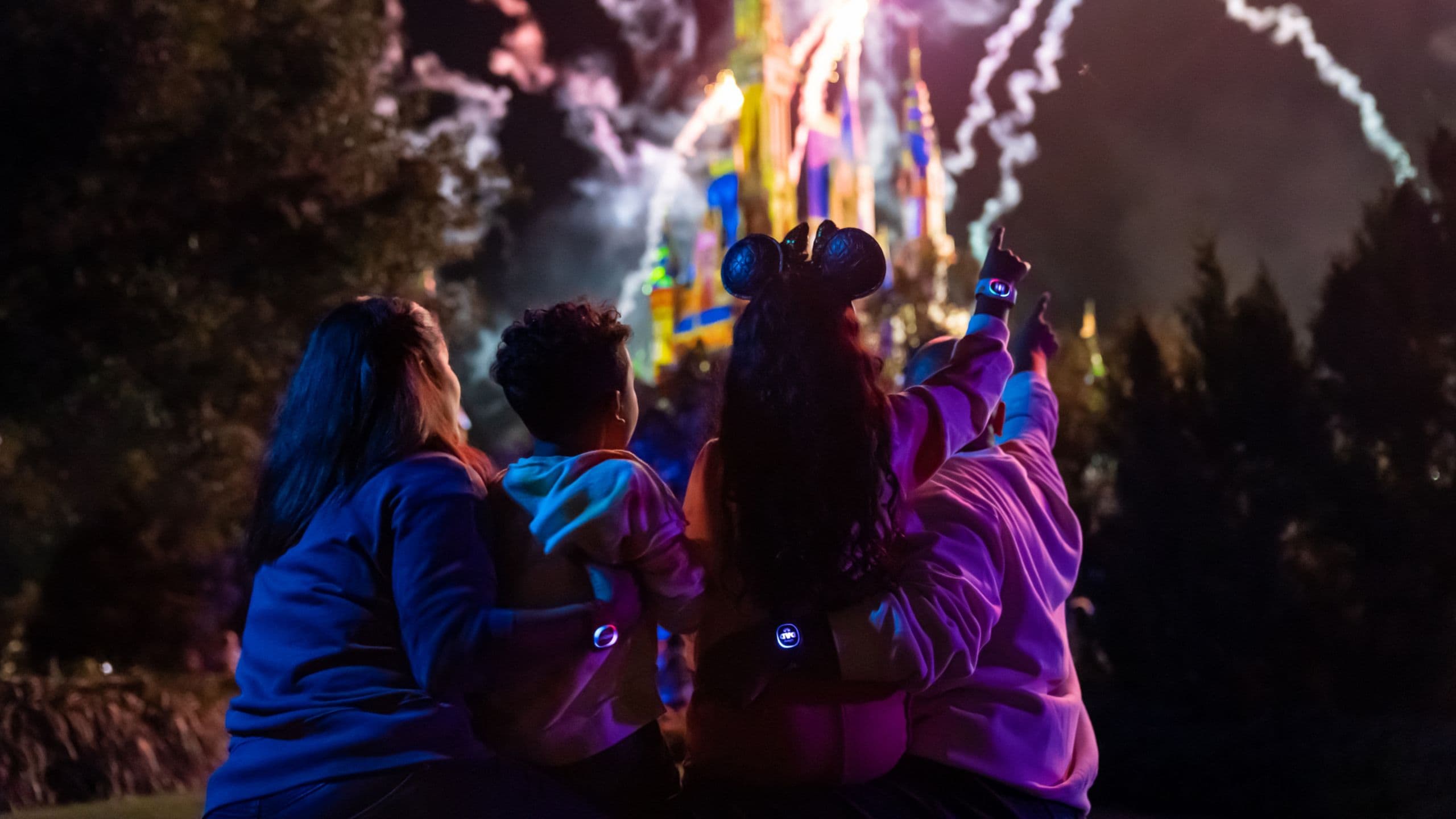
The Walt Disney Company started its venture into RFID technology a little after Walmart, rolling it out as a test pilot (officially) in late 2011 at Disney World’s Epcot theme park. A little over a year later, Disney implemented NFC RFID for access control in their on-site hotels and started rolling out tap-to-pay features in onsite retail locations using “Key to the World” RFID smart cards. A year after that, Disney released its coveted MagicBands, which are instrumental to Disney’s ability to make the customer experience magical (with some help from UHF RFID and NFC technology).
In this article, we will walk through the top 10 ways that Disney uses RFID technology, and we have divided these 10 NFC and RFID applications into two categories based on the usage and the technology. Read the full post to see why Disney has been so successful in their 10+ year journey with RFID!
Visitor Experiences: MagicBands (NFC, UHF RFID, Radio)
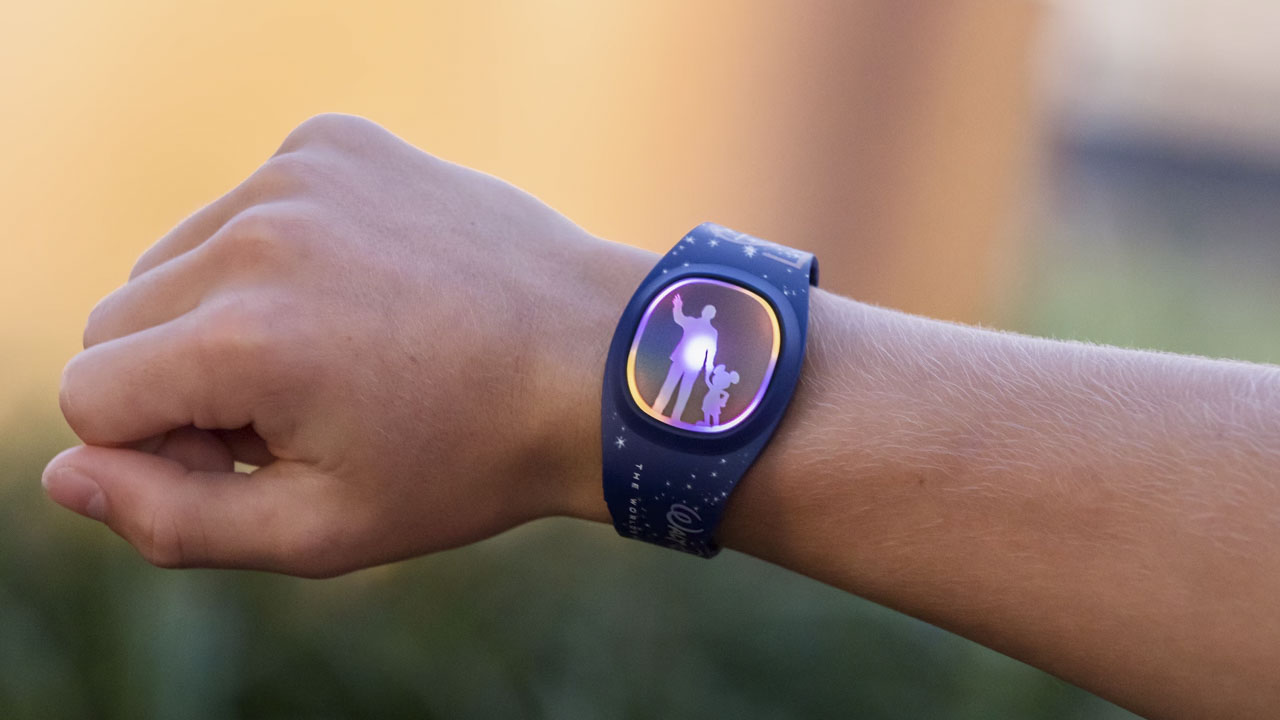
All about MagicBands
MagicBands are waterproof, colorful wristbands embedded with small RFID chips. In every band, there will be at least three RF components, i.e., an integrated UHF RFID chip (860-960 MHz), NFC RFID chip (13.56 MHz), and 2.4 GHz external radio. Combining these three RF frequencies enables MagicBands to be used in a variety of different applications at different read ranges throughout the park.
Disney MagicBands can be linked to a visitor’s Disney account using the Disneyland app or My Disney Experience mobile app.
In 2022, Disney decided to improve their MagicBand experience by launching MagicBand+. MagicBand+ is the 3rd iteration of Disney’s RFID-based, proprietary wristband technology, following MagicBand and MagicBand 2. This third-generation technology now includes interactive additions and customizable features, such as rechargeable batteries, haptic vibrations, customizable light patterns, and more.
1.RFID Ticketing
Once you link your Disney MagicBand to your Disney account using the Disneyland app or My Disney Experience mobile app, you can use your MagicBand as your official Disney ticket. When entering Disney parks, simply tap your NFC-enabled MagicBand to the RFID reader and let the magic begin.
In addition to your park tickets, your MagicBand can also allow guests access to VIP and restricted areas, and Disney restaurants that require a reservation.
2. Identification: Photo Gathering
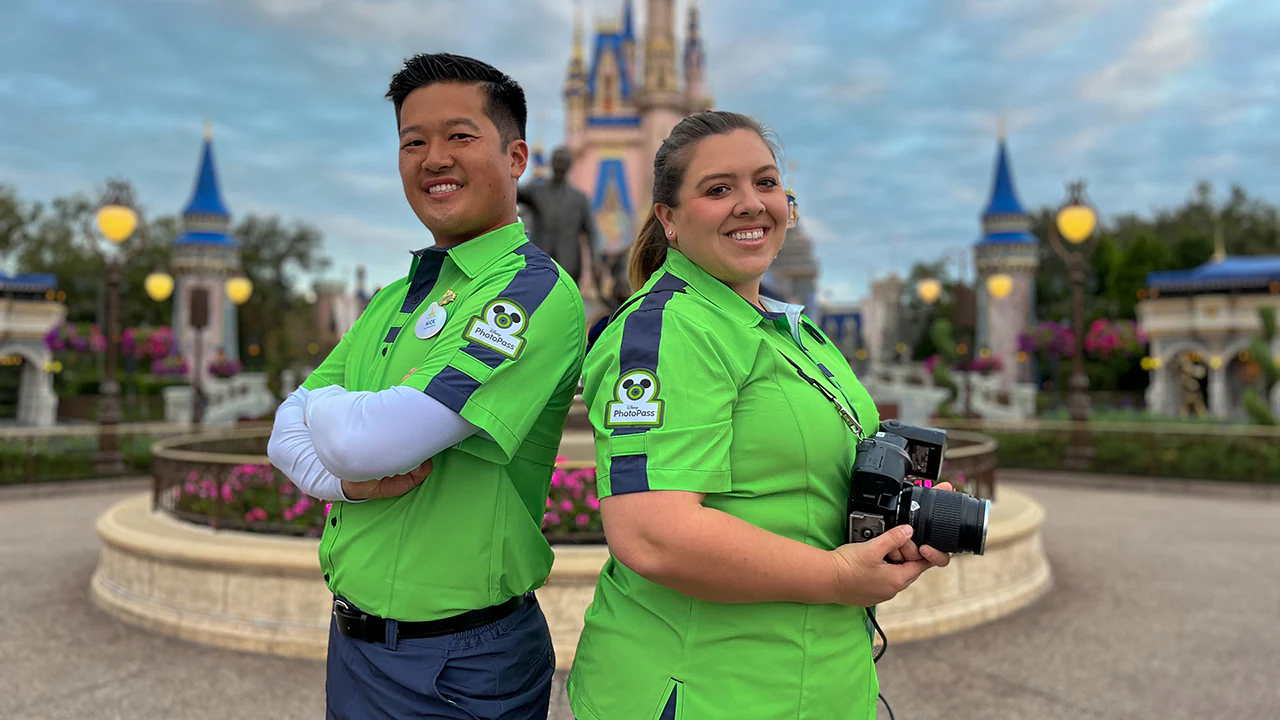
Disney PhotoPass photographers are all throughout the park, capturing your special moments and creating lasting photo memories. There are a few different ways to view or get your hands on digital copies of these photos, but the easiest way is by tapping your MagicBand or Key to the World Card on a photographer’s RFID-enabled device.
When a photographer reads NFC-enabled wristband/card, they can easily associate all photos taken of you and your family to your Disney account. Using NFC to associate photos to a Disney PhotoPass account is much easier than the alternative, which is to keep track of a small slip of paper with a number on it, given to you each time a photo is taken.
Afterward, visitors can access the digital photos online, and then choose to simply view, or purchase and download. The ability to capture, associate, and individually store special moments created by Disney photographers is one of the best and most popular uses of NFC technology at Disney parks.
3. Access Control: Guest Hotel Rooms & Special Areas
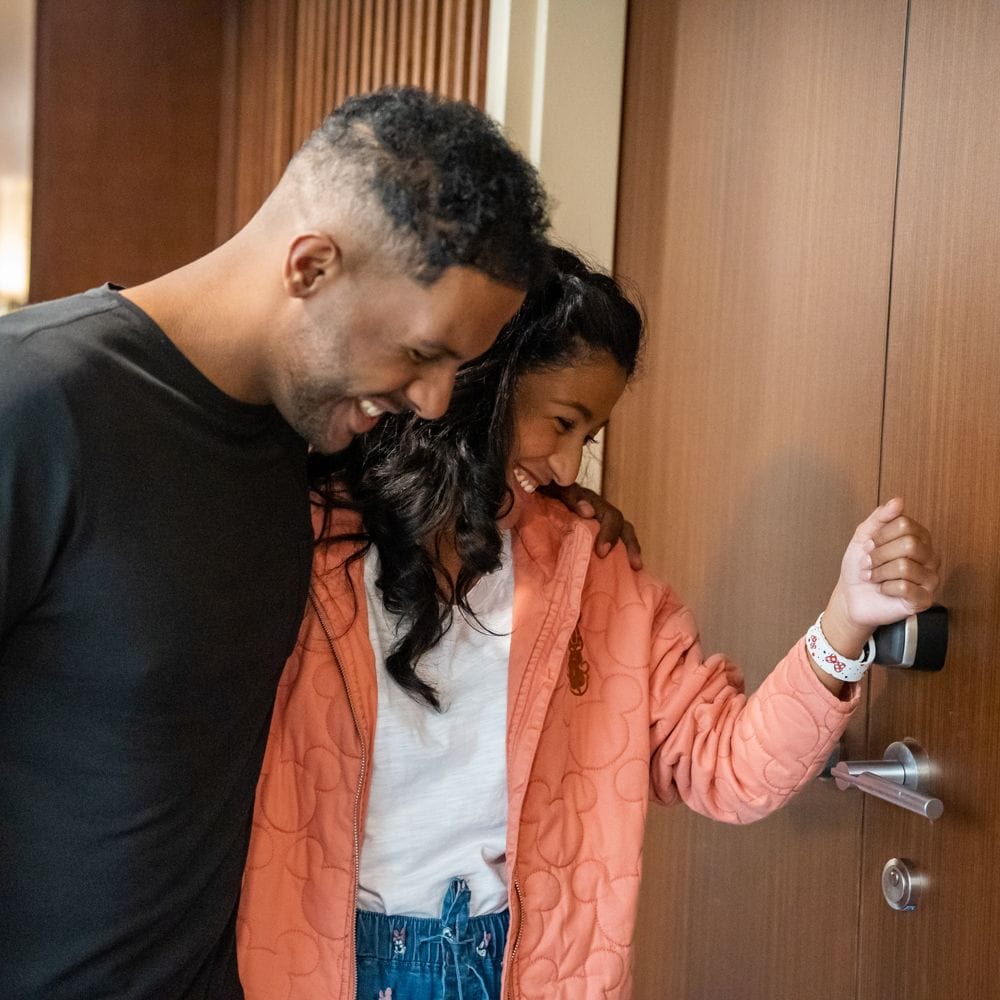
Access Control is one of the most popular uses of NFC or HF RFID technology, largely due to hotels, resorts, and even cruise ships making the switch from less secure magstripe cards. Disney was one of the first, large-scale implementations of an RFID access control system with their Key to the World cards in 2011- 2013.
Since the first implementation, Disney has expanded its access control opportunities to include not only room access, but VIP area access, Lightning Lane access (ticketing), backstage locations, and other specialty areas.
To provide access to your hotel rooms or special areas, Disney MagicBands or a Key to the World Card can be scanned in order to unlock access to special areas. All you have to do is touch the MagicBands with the door sensor to unlock the rooms or special areas – thanks to embedded NFC chips.
4. Purchasing Drinks/Food/Retail Items
Within Disney parks, visitors can now use their MagicBand or Key to the World card to purchase food, drinks, and retail items.
Each MagicBand or Key to the World card is linked to your Disney account and can optionally be linked to a credit card, which can charge your account automatically. You can simply tap your band or card to easily purchase retail items across the different locations in the parks.
By allowing MagicBands to also be used for purchasing – Disney is creating a hassle-free customer experience for every visitor.
5. Traffic Flow/Management/Line Control
One of the behind-the-scenes ways that Disney is using RFID technology, is collecting visitor movement data to manage each park’s traffic flow. Many people might see this as a little scary, but just like every way Disney uses RFID, the goal is to create an amazing customer experience.
MagicBands use their long-range UHF chip and/or 2.4 GHz radio to communicate with designated sensors around the park. These sensors are continuously collecting data from each MagicBand to understand the flow of traffic, better estimate line lengths and wait times, and manage traffic bottlenecks.
There’s not a lot of information on how Disney is doing this and the exact data they are using to manage this process, but that’s pretty on-brand for Disney. There is always a lot of behind-the-scenes technology and data that helps to create truly one-of-a-kind magical experiences.
6. Interactive Experiences
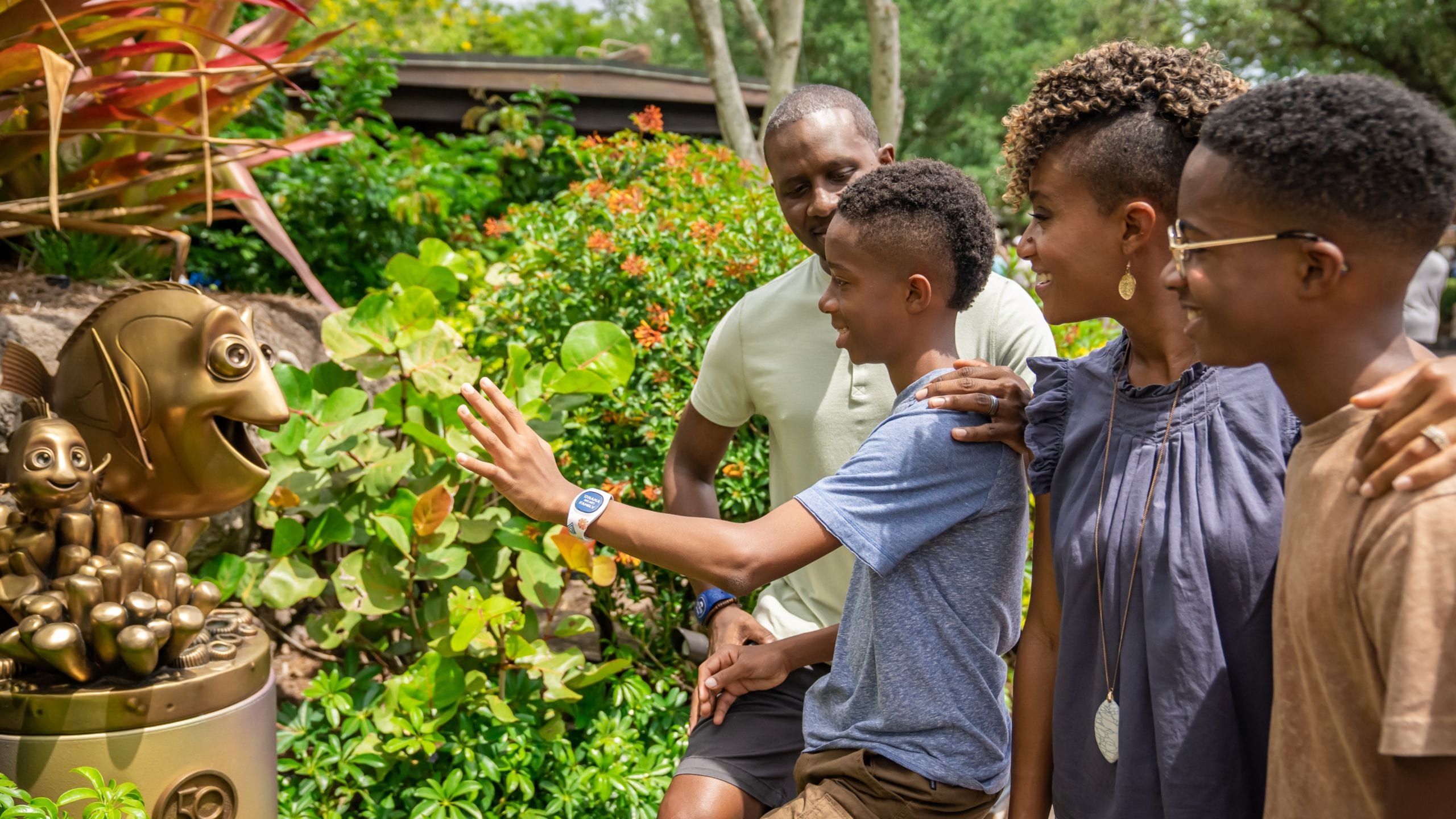
Around the park and on specific rides, RFID technology located in a visitor’s MagicBand can also allow for unique, interactive experiences. Some interactive experiences occur when sensors read any MagicBand in the vicinity, signaling a visitor is near, while other experiences are more personal.
Some Disney Park rides, like It’s a Small World, use sensors on the ride to read the first name of the visitor and display it on the way out of the ride.
Another popular interactive experience is finding ‘virtual bounties’ or other easter-egg like experiences in Star Wars Galaxies Edge.
One interactive experience that can truly take a visitor’s breath away is when a MagicBand syncs up with night-time fireworks, and creates vibration and light effects. This new haptic feedback experience with Disney MagicBand+ not only creates a magical experience for all visitors – but it enables visitors with hearing or seeing restrictions, a chance to be a part of the experience of an incredible Disney fireworks show.
7. Analytics & Metrics
With the implementation of MagicBands, Disney is able to collect an unprecedented amount of data about guests and park operations. Disney RFID-powered sensors/devices around the park collect and analyze guest movements, dining choices, ride preferences, queue times, and much more.
These insights and analytics are used to help the Disney team to make data-driven decisions and improve park efficiency. With these insights, Disney can continue enhancing the Disney experience and making each guests’ visit even more magical.
Behind the Scenes: UHF RFID Systems
8. Inventory Management
Disney RFID technology also facilitates efficient inventory management behind the scenes. Retail items are tagged with RFID chips, which provide real-time tracking of stock levels and locations. This helps Disney avoid situations of overstocking or understocking popular items like clothing and apparel, toys and gadgets, and other memorabilia.
Moreover, inventory management with UHF RFID also reduces manual labor and speeds up time-consuming processes, allowing employees to do more valuable tasks.
For instance, Disney has adopted an inventory trolley powered by ThingMagic RFID technology, which expedites the process of handling the clothing warehouse inventory.
9. RFID Laundry Management: Laundering/Costuming
Costumes are one of the most important elements in every Disney theme park. To keep track of clothing, costumes, and accessories worth millions of dollars, Disney is using UHF RFID technology.
To better understand how this is happening, here’s how ThingMagic UHF RFID technology (ThingMagic M6 RFID Readers) is used by Disney in its Shanghai theme park:
- The cast actor picks up his costume from the warehouse and enters the smart scanning kiosk linked with the ThingMagic RFID Reader.
- He uses an NFC RFID badge to scan his ID at the kiosk.
- The screen will display his face name to verify identification.
- The RFID system scans the costume’s RFID tag he picked, and send the information to Disney's clothing management software.
- The software then checks out the costume (and accessories) to the specific actor, like a library book.
- After wearing the costume, the cast actor places the RFID tagged clothes in the RFID-enabled laundry tub. The pre-installed RFID reader will read the tag ID, update the costume’s in/out status, and unassociate the actor from the costume.
With ThingMagic RFID technology, Disney was able to:
- Save over $1 million in operating costs.
- Get almost 100% accuracy in inventory counting.
- Reduce inventory time to 2 working hours from 180 hours.
- Eradicate staff checkout counter (manual checking in/out process)
Disney’s costume management system using UHF RFID technology, allows them to save time and money by using RFID automation processes to manage laundering/costuming.
10. Parade Float Systems
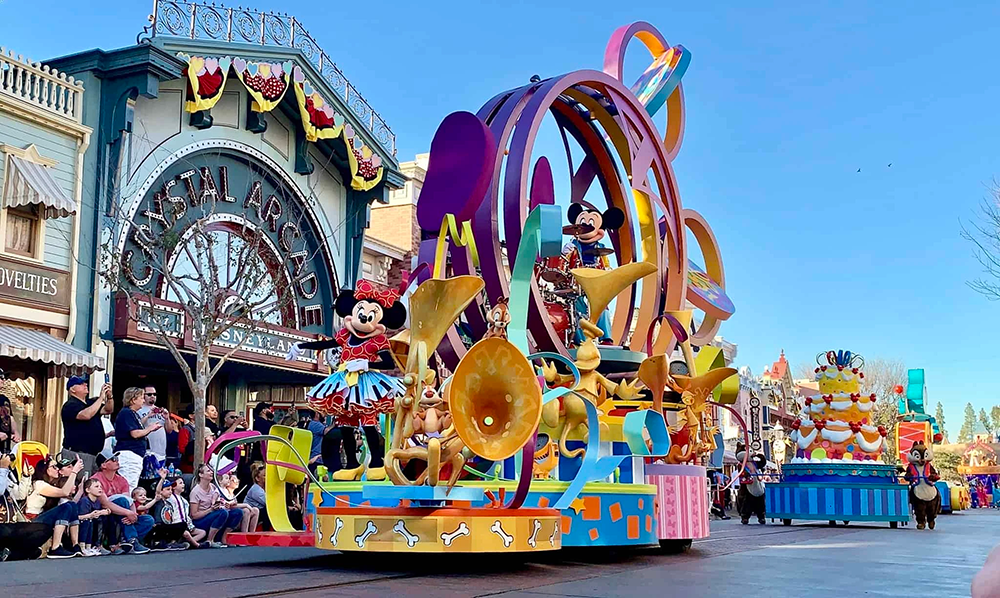
An additional way that Disney uses RFID technology behind the scenes is with their parade control float systems. RFID readers and antennas along the parade routes read sensors/tags attached to each float and provide that tag read data.
That data is collected in a software system and is used to measure the speed, location, and synchronization of floats. Disney has ideal metrics in terms of speed, location, and spacing between floats that can be compared to the incoming data.
This data can then tell certain floats to slow down, speed up, or other details in order to ensure that each parade is timed perfectly for truly magical performances.
Conclusion - Why is Disney so Successful with RFID?
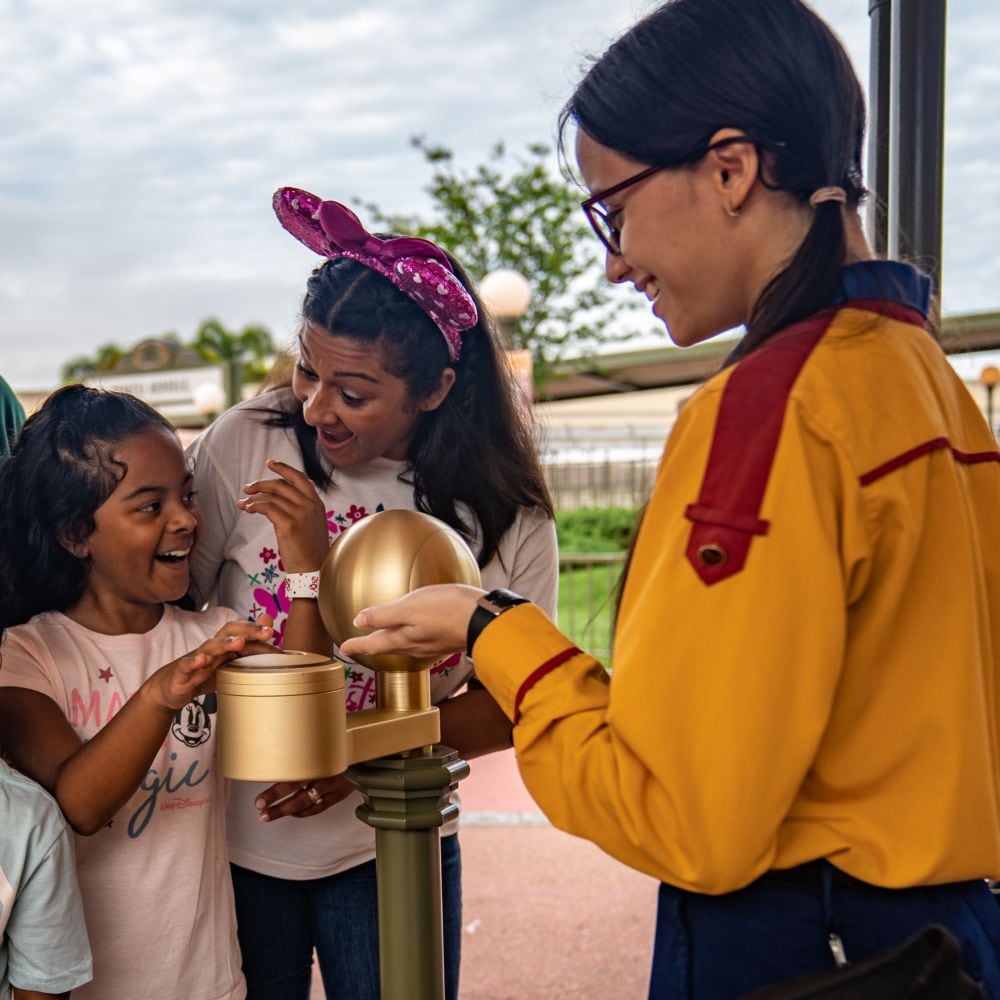
One of the reasons that Disney is so successful with their MagicBand technology is that they never stopped at one RFID application. Disney knew that implementing RFID across all theme parks and cruise lines came with a significant cost, along with visitor skepticism due to the new technology.
In order to spread out the cost of RFID hardware and get parkgoers on board with RFID technology, Disney is constantly exploring additional ways that the technology can be implemented.
Every time that Disney adds a new interactive experience or a new functionality, they are spreading out the adoption cost and adding to what Disney values most - the customer experience. Each new functionality added to their unique MagicBand technology, is done with the customer experience as the priority. The more functionalities available with MagicBands, the harder it is for a customer to say no to the technology and pass up experiencing the added magic.
Additionally, Disney is going above and beyond by creating a hassle-free customer experience for every visitor. Other brands that are successfully creating this frictionless customer experience with RFID include Amazon and their ‘Just Walk Out’ technology, Apple using NFC technology for payments, ticketing, and more, and other top brands.
For more information on all things RFID, contact us!
Sources:
https://www.rfidjournal.com/magicbands-bring-conve...
https://disneyworld.disney.go.com/guest-services/m...
